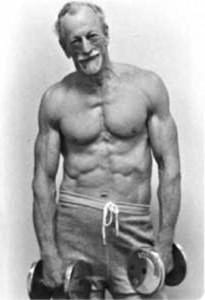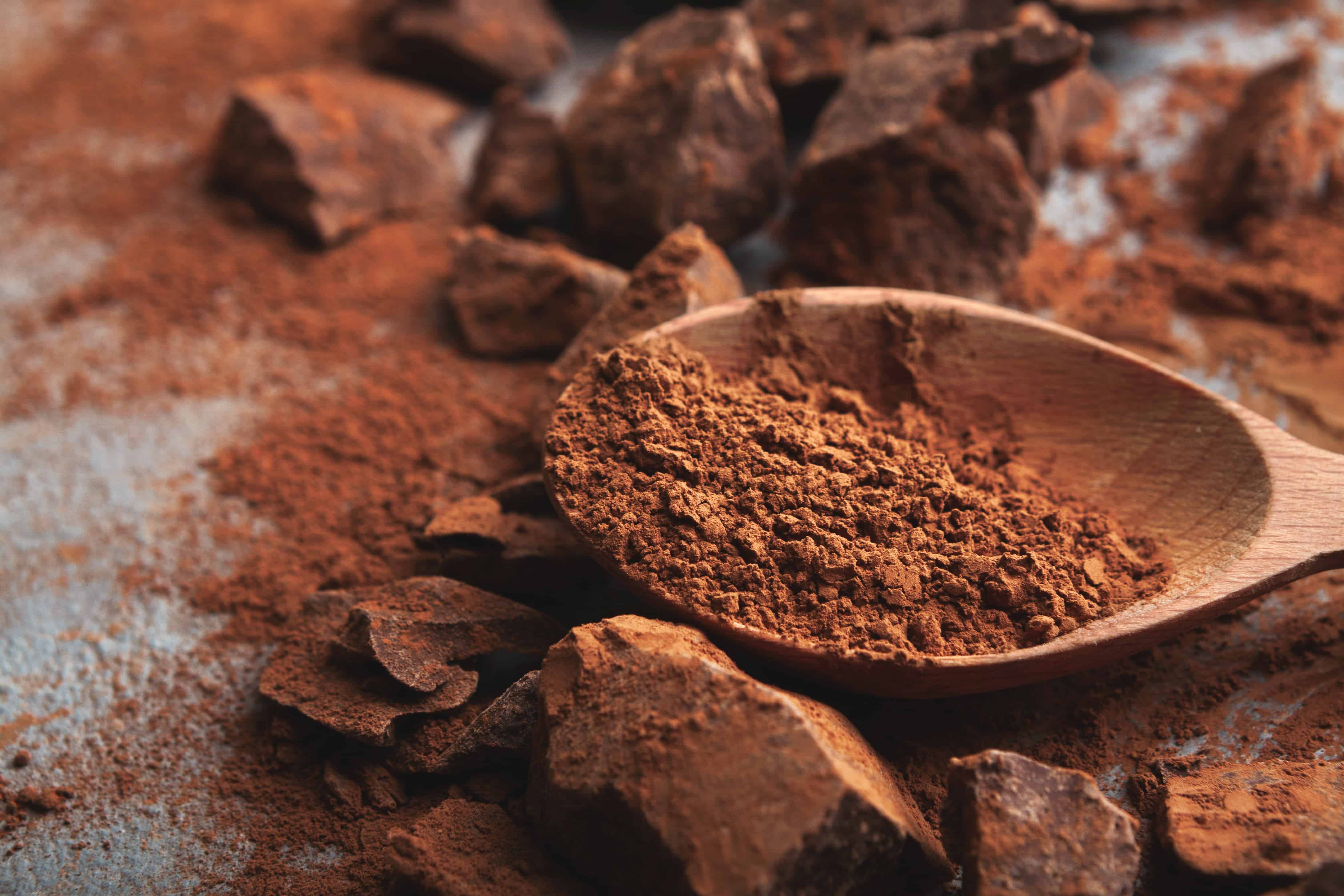 Is a loss of strength, mobility, and functionality an inevitable part of aging? No, it’s not. It’s a consequence of disuse, suboptimal hormone levels, dietary and nutrient considerations and other variables, all of which are compounded by aging. One of the greatest threats to an aging adult’s ability to stay healthy and functional is the steady loss of lean body mass – muscle and bone in particular.
Is a loss of strength, mobility, and functionality an inevitable part of aging? No, it’s not. It’s a consequence of disuse, suboptimal hormone levels, dietary and nutrient considerations and other variables, all of which are compounded by aging. One of the greatest threats to an aging adult’s ability to stay healthy and functional is the steady loss of lean body mass – muscle and bone in particular.
The medical term for the loss of muscle is sarcopenia, and it’s starting to get the recognition it deserves by the medical and scientific community. For decades, that community has focused on the loss of bone mass (osteoporosis), but paid little attention to the loss of muscle mass commonly seen in aging populations. Sarcopenia is a serious healthcare and social problem that affects millions of aging adults. This is no exaggeration. As one researcher recently stated:
“Even before significant muscle wasting becomes apparent, ageing is associated with a slowing of movement and a gradual decline in muscle strength, factors that increase the risk of injury from sudden falls and the reliance of the frail elderly on assistance in accomplishing even basic tasks of independent living. Sarcopenia is recognized as one of the major public health problems now facing industrialized nations, and its effects are expected to place increasing demands on public healthcare systems worldwide” (Lynch, 2004)
Sarcopenia and osteoporosis are directly related conditions, one often following the other. Muscles generate the mechanical stress required to keep our bones healthy; when muscle activity is reduced it exacerbates the osteoporosis problem and a vicious circle is established, which accelerates the decline in health and functionality.
What defines sarcopenia from a clinical perspective? Sarcopenia is defined as the age-related loss of muscle mass, strength and functionality. Sarcopenia generally appears after age 40 and accelerates after the age of approximately 75. Although sarcopenia is mostly seen in physically inactive individuals, it is also commonly found in individuals who remain physically active throughout their lives. Thus, it’s clear that although physical activity is essential, physical inactivity is not the only contributing factor. Just as with osteoporosis, sarcopenia is a multifactorial process that may involve decreased hormone levels (in particular, GH, IGF-1, MGF, and testosterone), a lack of adequate protein and calories in the diet, oxidative stress, inflammatory processes, chronic, low level, diet-induced metabolic acidosis, as well as a loss of motor nerve cells.
A loss of muscle mass also has far ranging effects beyond the obvious loss of strength and functionality. Muscle is a metabolic reservoir. In times of emergency it produces the proteins and metabolites required for survival after a traumatic event. In practical terms, frail elderly people with decreased muscle mass often do not survive major surgeries or traumatic accidents, as they lack the metabolic reserves to supply their immune systems and other systems critical for recovery. There is no single cause of sarcopenia, as there is no single cause for many human afflictions. To prevent and/or treat it, a multi-faceted approach must be taken, which involve hormonal factors, dietary factors, supplemental nutrients, and exercise.
Dietary considerations
The major dietary considerations that increase the risk of sarcopenia are: a lack of adequate protein, inadequate calorie intake, and low level, chronic, metabolic acidosis.
Although it’s generally believed the “average” American gets more protein then they require, the diets of older adults are often deficient. Compounding that are possible reductions in digestion and absorption of protein, with several studies concluding protein requirements for older adults are higher than for their younger counterparts (Young, 1990; Campbell et al., 1994; Campbell et al., 1996). These studies indicate that most older adults don’t get enough high quality protein to support and preserve their lean body mass.
There is an important caveat on increasing protein, which brings us to the topic of low level, diet-induced, metabolic acidosis. Typical Western diets are high in animal proteins and cereal grains, and low in fruits and vegetables. It’s been shown that such diets cause a low grade metabolic acidosis, which contributes to the decline in muscle and bone mass found in aging adults (Frassetto et al., 2001). One study found that by adding a buffering agent (potassium bicarbonate) to the diet of post-menopausal women the muscle wasting effects of a “normal” diet were prevented (Frassetto et al., 1997). The researchers concluded the use of the buffering agent was “… potentially sufficient to both prevent continuing age-related loss of muscle mass and restore previously accrued deficits.”
The take home lesson from this study is that – although older adults require adequate intakes of high quality proteins to maintain their muscle mass (as well as bone mass), it should come from a variety of sources and be accompanied by an increase in fruits and vegetables as well as a reduction of cereal grain-based foods. The use of supplemental buffering agents such as potassium bicarbonate, although effective, does not replace fruits and vegetables for obvious reasons, but may be incorporated into a supplement regimen.
Hormonal considerations
As most are aware, with aging comes a general decline in many hormones, in particular, anabolic hormones such as Growth Hormone (GH), DHEA, and testosterone. In addition, researchers are looking at Insulin-like Growth factor one (IGF-1) and Mechano Growth factor (MGF) which are essential players in the hormonal milieu responsible for maintaining muscle mass as well as bone mass. Without adequate levels of these hormones, it’s essentially impossible to maintain lean body mass, regardless of diet or exercise.
It’s been shown, for example, that circulating GH declines dramatically with age. In old age, GH levels are only one-third of that in our teenage years. In addition, aging adults have a blunted GH response to exercise as well as reduced output of MGF (Hameed et al., 2003), which explains why older adults have a much more difficult time building muscle compared to their younger counterparts. However, when older adults are given GH, and then exposed to resistance exercise, their MGF response is markedly improved, as is their muscle mass (Hameed et al., 2004).
Another hormone essential for maintaining lean body mass is testosterone. Testosterone, especially when given to men low in this essential hormone, has a wide range of positive effects. One review looking at the use of testosterone in older men (Gruenewald et al., 2003) concluded:
“In healthy older men with low-normal to mildly decreased testosterone levels, testosterone supplementation increased lean body mass and decreased fat mass. Upper and lower body strength, functional performance, sexual functioning, and mood were improved or unchanged with testosterone replacement”
Contrary to popular belief, women also need testosterone! Although women produce less testosterone, it’s as essential to the health and well being of women as it is for men.
The above is a highly generalized summary and only the tip of the proverbial iceberg regarding various hormonal influences on sarcopenia. A full discussion on the role of hormones in sarcopenia is well beyond the scope of this article. Needless to state, yearly blood work after the age of 40 is essential to track your hormone levels, and if needed, to treat deficiencies via Hormone Replacement Therapy (HRT). Private organizations like the Life Extension Foundation offer comprehensive hormone testing packages, or your doctor can order the tests. However, HRT is not for everyone and may be contraindicated in some cases. Regular monitoring is required, so it’s essential to consult with a medical professional versed in the use of HRT, such as an endocrinologist.
Nutrient considerations:
There are several supplemental nutrients that should be especially helpful for combating sarcopenia, both directly and indirectly. Supplements that have shown promise for combating sarcopenia are creatine, vitamin D, whey protein, acetyl-L-carnitine, glutamine, and buffering agents such as potassium bicarbonate.
Creatine
The muscle atrophy found in older adults comes predominantly from a loss of fast twitch (FT) type II fibers which are recruited during high-intensity, anaerobic movements (e.g., weight lifting, sprinting, etc.). Interestingly, these are exactly the fibers creatine has the most profound effects on. Various studies find creatine given to older adults increases strength and lean body mass (Chrusch et al., 2001; Gotshalk et al., 2002; Brose et al., 2003). One group concluded:
“Creatine supplementation may be a useful therapeutic strategy for older adults to attenuate loss in muscle strength and performance of functional living tasks.”
Vitamin D
It’s well established that vitamin D plays an essential role in bone health. However, recent studies suggest it’s also essential for maintaining muscle mass in aging populations. In muscle, vitamin D is essential for preserving type II muscle fibers, which, as mentioned above, are the very muscle fibers that atrophy most in aging people. Adequate vitamin D intakes could help reduce the rates of both osteoporosis and sarcopenia found in aging people (Montero-Odasso et al., 2005) leading the author of one recent review on the topic of vitamin D’s effects on bone and muscle to conclude:
“In both cases (muscle and bone tissue) vitamin D plays an important role since the low levels of this vitamin seen in senior people may be associated to a deficit in bone formation and muscle function”
and
“We expect that these new considerations about the importance of vitamin D in the elderly will stimulate an innovative approach to the problem of falls and fractures which constitutes a significant burden to public health budgets worldwide.”
Whey protein
As previously mentioned, many older adults fail to get enough high quality protein in their diets. Whey has an exceptionally high biological value (BV), with anti-cancer and immune enhancing properties among its many uses. As a rule, higher biological value proteins are superior for maintaining muscle mass compared to lower quality proteins, which may be of particular importance to older individuals. Finally, data suggests “fast” digesting proteins such as whey may be superior to other proteins for preserving lean body mass in older individuals (Dangin et al., 2002).
Additional Nutrients of interest
There are several additional nutrients worth considering when developing a comprehensive supplement regimen designed to prevent and or treat sarcopenia. In no particular order, they are: fish oils (EPA/DHA), acetyl-l-carnitine, glutamine, and buffering agents such as potassium bicarbonate. There is good scientific reason to believe they would be beneficial for combating sarcopenia, but data specific to sarcopenia is lacking. For example, EPA/DHA has been found to preserve muscle mass (e.g. is anti-catabolic) under a wide range of physiological conditions. The anti-inflammatory effects of fish oils would also lead one to believe they should be of value in the prevention or treatment of sarcopenia. In general, fish oils have so many health benefits, it makes sense to recommend them here.
Acetyl-l-carnitine also offers many health benefits to aging people, and data suggests it should be useful in combating this condition. More research specific to sarcopenia is needed however.
Glutamine is another nutrient that should be useful in an overall plan to combat sarcopenia. Finally, data does suggest strongly that bicarbonate and citrate buffering agents containing minerals such as potassium, magnesium, and calcium can reverse the metabolic acidosis caused by unbalanced western diets. However, I hesitate to recommend this particular strategy as it does not address the root cause, which is the diet itself. Much greater health benefits will result from improving the diet over simply adding in this supplement. In addition, there are potential problems that could result from excessive intake of buffer salts, such as hyperkalemia and formation of kidney stones.
Exercise Considerations
Exercise is the lynchpin to the previous sections. Without it, none of the above will be an effective method of preventing/treating sarcopenia. Exercise is the essential stimulus for systemwide release of various hormones such as GH, as well as local growth factors in tissue, such as MGF. Exercise is the stimulus that increases protein and bone synthesis, and exerts other effects that combat the loss of essential muscle and bone as we age. Exercise optimizes the effects of HRT, diet and supplements, so if you think you can sit on the couch and follow the above recommendations…think again.
Although any exercise is generally better then no exercise, all forms of exercise are not created equal. You will note, for example, many of the studies listed at the end of this article have titles like: “GH and resistance exercise” or “creatine effects combined with resistance exercise” and so on. Aerobic exercise is great for the cardiovascular system and helps keep body fat low, but when scientists or athletes want to increase lean mass, resistance training is always the method. Aerobics does not build muscle and is only mildly effective at preserving the lean body mass you already have. Thus, some form of resistance training (via weights, machines, bands, etc.) is essential for preserving or increasing muscle mass. The CDC report on resistance exercise for older adults summarizes it as:
“In addition to building muscles, strength training can promote mobility, improve health-related fitness, and strengthen bones.”
Combined with HRT (if indicated), dietary modifications, and the supplements listed above, dramatic improvements in lean body mass can be achieved at virtually any age, with improvements in strength, functionality into advanced age, and improvements in overall health and general well being.
Conclusion
Hopefully, the reader will appreciate that I have attempted to cover a huge amount of territory with this topic. Each sub-section (nutrition, hormones, etc.) could easily be its own article if not its own book. This means each section is a general overview vs. anything close to an exhaustive discussion. Below is guide to web sites that offer additional information regarding the topics covered in this article and should (hopefully!) help fill in any gaps.
To summarize, to prevent or treat sarcopenia:
• Get adequate high quality proteins from a variety of sources as well as adequate calories. Avoid excessive animal protein and cereal grain intakes while increasing the intake of fruits and vegetables.
• Get regular blood work on all major hormones after the age of 40 and discuss with a medical professional if HRT is indicated.
• Add supplements such as: creatine, vitamin D, whey protein, acetyl-l-carnitine, glutamine, and buffering agents such as potassium bicarbonate.
• Exercise regularly – with an emphasis on resistance training – a minimum of 3 times per week.
I’m going to conclude this article the way most people would start it, with the good news and the bad news. The bad news is, millions of people will suffer from a mostly avoidable loss of functionality and will become weak and frail as they age from a severe loss of muscle mass. The good news is that you don’t have to be one of those people. One thing is very clear: it’s far easier, cheaper, and more effective to prevent sarcopenia – or at least greatly slow its progression – than it is to treat it later in life. Studies have found, however, that it’s never too late to start – so don’t be discouraged if you are starting your sarcopenia fighting program later in life. People following my (Now Free!) program for weight gain (in the form of muscle…) will be following the proper guidelines for avoiding sarcopenia.
Additional information:
CDC guide to resistance training for older adults: http://www.cdc.gov/nccdphp/dnpa/physical/growing_stronger/spotlight.htm
References:
Brose A, Parise G, Tarnopolsky MA. Creatine supplementation enhances isometric strength and body composition improvements following strength exercise training in older adults. J Gerontol A Biol Sci Med Sci. 2003 Jan;58(1):11-9.
Campbell WW, et al. Protein requirements of elderly people. Eur J Clin Nutr 1996 Feb;50 Suppl 1:S180-3; discussion S183-5.
Campbell WW, et al. Increased protein requirements in elderly people: new data and retrospective reassessments Am J Clin Nutr 1994 Oct;60(4):501-9.
Chrusch MJ, Chilibeck PD, Chad KE, Davison KS, Burke DG. Creatine supplementation combined with resistance training in older men. Med Sci Sports Exerc. 2001 Dec;33(12):2111-7.
Dangin M, Boirie Y, Guillet C, Beaufrere B. Influence of the protein digestion rate on protein turnover in young and elderly subjects. J Nutr. 2002 Oct;132(10):3228S-33S.
Frassetto L, et al. Potassium bicarbonate reduces urinary nitrogen excretion in postmenopausal women. J Clin Endocrinol Metab. 1997 Jan;82(1):254-9.
Frassetto L, et al., Diet, evolution and aging–the pathophysiologic effects of the post-agricultural inversion of the potassium-to-sodium and base-to-chloride ratios in the human diet. Eur J Nutr. 2001 Oct;40(5):200-13.
Gotshalk LA, Volek JS, Staron RS, Denegar CR, Hagerman FC, Kraemer WJ. Creatine supplementation improves muscular performance in older men. Med Sci Sports Exerc. 2002 Mar;34(3):537-43.
Gruenewald DA, Matsumoto AM. Testosterone supplementation therapy for older men: potential benefits and risks. J Am Geriatr Soc. 2003 Jan;51(1):101-15; discussion 115.
Hameed M, et al.. Expression of IGF-I splice variants in young and old human skeletal muscle after high resistance exercise. J Physiol 547: 247–254, 2003
Hameed M, et al. The effect of recombinant human growth hormone and resistance training on IGF-I mRNA expression in the muscles of elderly men. J Physiol 555: 231–240, 2004
Lynch GS. Emerging drugs for sarcopenia: age-related muscle. wasting. Expert Opin Emerg Drugs. 2004 Nov;9(2):345-61.
Montero-Odasso M, Duque G. Vitamin D in the aging musculoskeletal system: an authentic strength preserving hormone. Mol Aspects Med. 2005 Jun;26(3):203-19.
Young VR. Amino acids and proteins in relation to the nutrition of elderly people. Age Ageing 1990 Jul;19(4):S10-24.
Additional references of interest:
Anawalt BD, Merriam GR. Neuroendocrine aging in men. Andropause and somatopause. Endocrinol Metab Clin North Am. 2001 Sep;30(3):647-69.
Gruenewald DA, Matsumoto AM. Testosterone supplementation therapy for older men: potential benefits and risks. J Am Geriatr Soc. 2003 Jan;51(1):101-15; discussion 115.
Herbst KL, Bhasin S. Testosterone action on skeletal muscle. Curr Opin Clin Nutr Metab Care. 2004 May;7(3):271-7.
Iannuzzi-Sucich M, Prestwood KM, Kenny AM. Prevalence of sarcopenia and predictors of skeletal muscle mass in healthy, older men and women. J Gerontol A Biol Sci Med Sci. 2002 Dec;57(12):M772-7.
Morley JE. GRECC, VA. Testosterone replacement in older men and women. J Gend Specif Med. 2001;4(2):49-53.
Tenover JS. Androgen replacement therapy to reverse and/or prevent age-associated sarcopenia in men.
Baillieres Clin Endocrinol Metab. 1998 Oct;12(3):419-25.
Vermeulen A, Goemaere S, Kaufman JM. Testosterone, body composition and aging. J Endocrinol Invest. 1999;22(5 Suppl):110-6.
Wittert GA, Chapman IM, Haren MT, Mackintosh S,Coates P, Morley JE. Oral testosterone supplementation increases muscle and decreases fat mass in healthy elderly males with low-normal gonadal status. J Gerontol A Biol Sci Med Sci. 2003 Jul;58(7):618-25.
Will Brink is the owner of the Brinkzone Blog. Will has over 30 years experience as a respected author, columnist and consultant, to the supplement, fitness, bodybuilding, and weight loss industry and has been extensively published. Will graduated from Harvard University with a concentration in the natural sciences, and is a consultant to major supplement, dairy, and pharmaceutical companies.
His often ground breaking articles can be found in publications such as Lets Live, Muscle Media 2000, MuscleMag International, The Life Extension Magazine, Muscle n Fitness, Inside Karate, Exercise For Men Only, Body International, Power, Oxygen, Penthouse, Women’s World and The Townsend Letter For Doctors.
He’s also been published in peer reviewed journals.
Will is the author of the popular e-books, both accompanied by private members forum access , Bodybuilding Revealed & Fat Loss Revealed.
You can also buy Will’s other books on Amazon, Apple iBook, and Barnes and Noble.







My Dear Will, thank you for being you. I thought you’d be interested in knowing how wide your net casts. I have been reading your articles for a few years, and I always get nuggets of information I can use. I get some amusement from your articles on swat training, and muscle shows, but the best is your expertly written scientific articles on a variety of subjects; most recently bringing to our attention sarcopenia (once again). I believe I started following you after reading your articles published in Life Extension Magazine.
I am a 63 year old woman who can’t keep up with you young pups anymore, but I am interested in preservation at this point. Thanks for the wonderful education you provide to your readers like me.
Sherry Jones/Wilmington, NC
Keep up the great writing.
Excellent contribution(s) to this website!
Wow, this is a problem that most people today face.Thanks for your great post.
Well written. Thanks.
Please explain, and I’m sure you can, how the acidosis you describe differs from keto-acidosis associated with the Adkins diet. Most people think that keto-acidosis is a positive thing since we all want to have less body fat.
It looks to me that all of the articles that you reference are 10 years old. Is this because of the lack of more recent research or published results, as I believe. I am trying to defend the idea to my doctor that testosterone levels for older men in the so called,” normal range “, does not mean that therapy should be cast aside. It seems very hard to convince an MD to prescribe T Therapy. Unless you can afford to pay big bucks to a ” special clinic”.
There’s a metric ton of articles on this site on the very newest studies showing benefits of T, risks of low T, etc, etc. If you use the search option above using terms like “testosterone” etc, you’ll find many recent articles and a few vids on that topic. Yes, some medical docs are far behind the curve of the science and supplying them with recent data can help. Or, you have to keep looking for a doc willing to help you.
Good luck!
good job Will.
Thanx! 🙂
Thank you for this information. it is a good reminder of the supplements that I had previously taken but was trying to simply my nutrient intake with more of a good multi vitamin. I do take extra Vitamin D as well as Calcium, Mag & Zinc. However as a 61 yrs young female with a physically demanding job as a massage therapist and working with weights and cardio out 3-4 times a week as well as a good diet. Not much meat but a good amount of vegetables and fruit. And taking bio-identical hormones, yet I am still experiencing a loss of muscle mass.
It seems rather challenging these days to find a doctor that will run tests to get to the root cause of anything.
How does one eat when allergic to eggs, wheat protein and gluten, and all dairy?
My approach to minimize the impact of sarcopenia due to aging is
the ketogenic nutritional way of eating with adequate protein, applying the Henneman principle to resistance weight training by including heavy set compound exercises in the 5-6 reps range for stimulating fast-twitch type muscules, and supplements to ensure healthy mitochondria, the body’s ATP producers.
I’m unclear why you’d expect keto to be best approach for combating sarcopenia, and I’d recommend following the strategies outlined in the article for best effects.
“Although any exercise is generally better then no exercise, all forms of exercise are not created equal.”
Than not then.